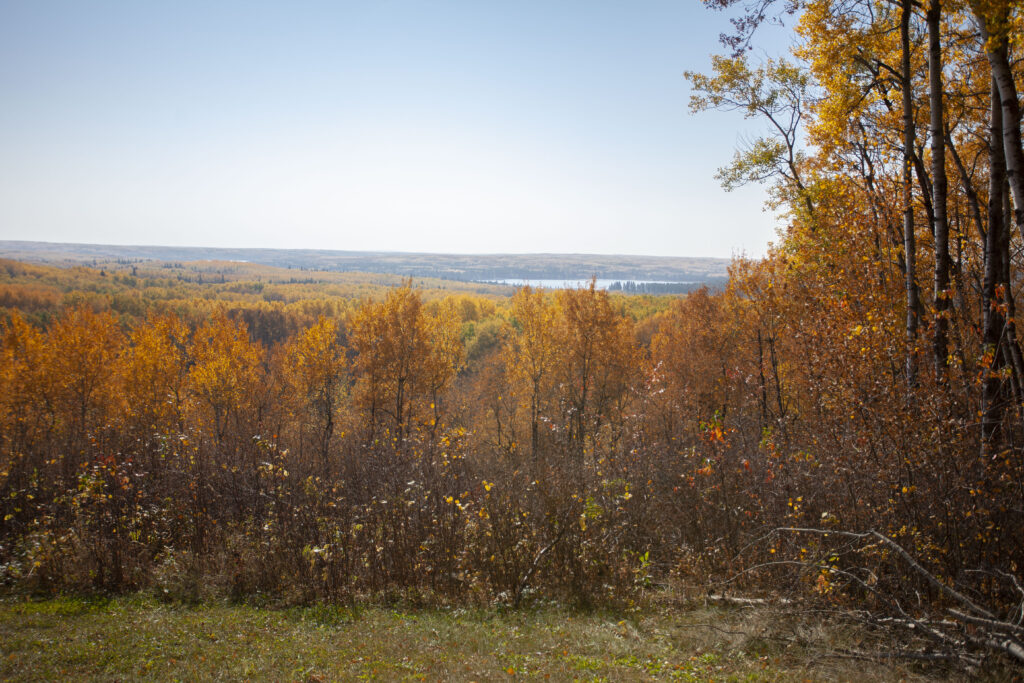
DISTRICT OF LAKELAND NO. 521
Serving Emma, Christopher, Anglin & McPhee Lakes, and a portion of the Boreal Forest Region.Environmental Bylaws and Environmental Plan
Healthy Shorelines
- Lakeshore Erosion
- Love Your Lake: Natural Edge Program
- Vacationland News: Shoring up our Shorelines
- Boat Wakes
- Video (NSRBC)
- ATV’s Illegal In Lake Water
- Wetlands
Water Quality
- Water Quality Overview
- Yearly Water Quality Summaries
- You and Lake Water Quality
- FAQ’s
- Tips for Healthy Lakes and Recreation
Wildlife/Invasive Species
- Bears
- Loons in Lakeland
- Invasive Species Directory
Fires in Lakeland
General Information & Resources
About the Committee/Contact Us
Wildlife / Bears
The District of Lakeland is located within the Boreal Forest. We are home to a variety of birds & animals. This insert is number 3 in a series of informational reference cards distributed in the District of Lakeland mailouts or available at the Environmental Advisory display in the District office. Save them for your future reference.
No. 3: Living with Wildlife
The key to harmonious living with wildlife is to keep wildlife in the wild & reduce
human/animal conflict. This is most effectively done by NOT attracting wildlife
into our subdivisions. Wildlife, including bears, is attracted to
odours & opportunities from barbeques, garbage, pet food, composters & bird seed.
The flip side of this insert provides some useful tips to keeping wildlife wild.

Bear Aware
Submitted by: Jacquie Moore – a member of the Environmental Advisory Committee
for the Lakeland District
Anyone who has spent much time in the Lakeland area this spring
and summer is well aware that there are more bears than usual in our
neighbourhoods. Besides the telltale signs of garbage cans tipped over
and all sorts of garbage dragged into the trees, there have been hundreds
of sightings. “It really has been a busy year for us,” says Bonnie Greene,
Conservation Officer for the Ministry of the Environment, stationed out of
Christopher Lake. “Calls have increased in the province this year. Since April,
overall we’ve received over 600 bear-related issues reported – compare that
to 2019, we had about 525 for the same reporting time period. This includes
simple sightings, bears causing issues in yards, or encounters.”
The rise in bear activity in the area is partly due to Mother Nature. “We had
a late spring with some cooler weather so the berry crops were late,” says
Bonnie, “and statistics show that when there is a late spring – slow berries
– bear calls do increase.” That may be why the bears came scouting around
to begin with, but it’s no longer the case. “A lot of the issues, when we do
receive the calls, are related to the improper storage of garbage. Also bird
feeders, and things that are left out like barbecues, pet food … if there is an
attractant around, a bear will certainly find it in a short period of time.”
A bear’s sense of smell is one of the best in the animal world. To put it in
perspective, bloodhounds are famous for their tracking skills – sometimes
called ‘a nose with a dog attached’, they have 40 times more scent
receptors than humans. But bears? They can smell seven times better than
a bloodhound.
Most of the bears being seen around the Lakeland are young – 1.5 to 2
years old. They’re still learning to make their way in the world without their
mothers, and the lure of food scraps in the garbage, or high-calorie pet
food, or greasy barbecue grills is irresistible to them. “If they do find a food
source, they will return many times to that same spot,” says Bonnie. “It’s
kind of like they have a GPS; they will program an area, a location, and
they will return to that many, many times to check and see if there’s food
there again.” Once a bear is comfortable enough in proximity to humans to
be showing up regularly and scavenging for food, they are more than just
a nuisance. They are associating food with humans, which makes them
habituated. And that is a dangerous situation for humans, and bears. At that
point, they must be removed.
From: Vacationland News EAC Articles